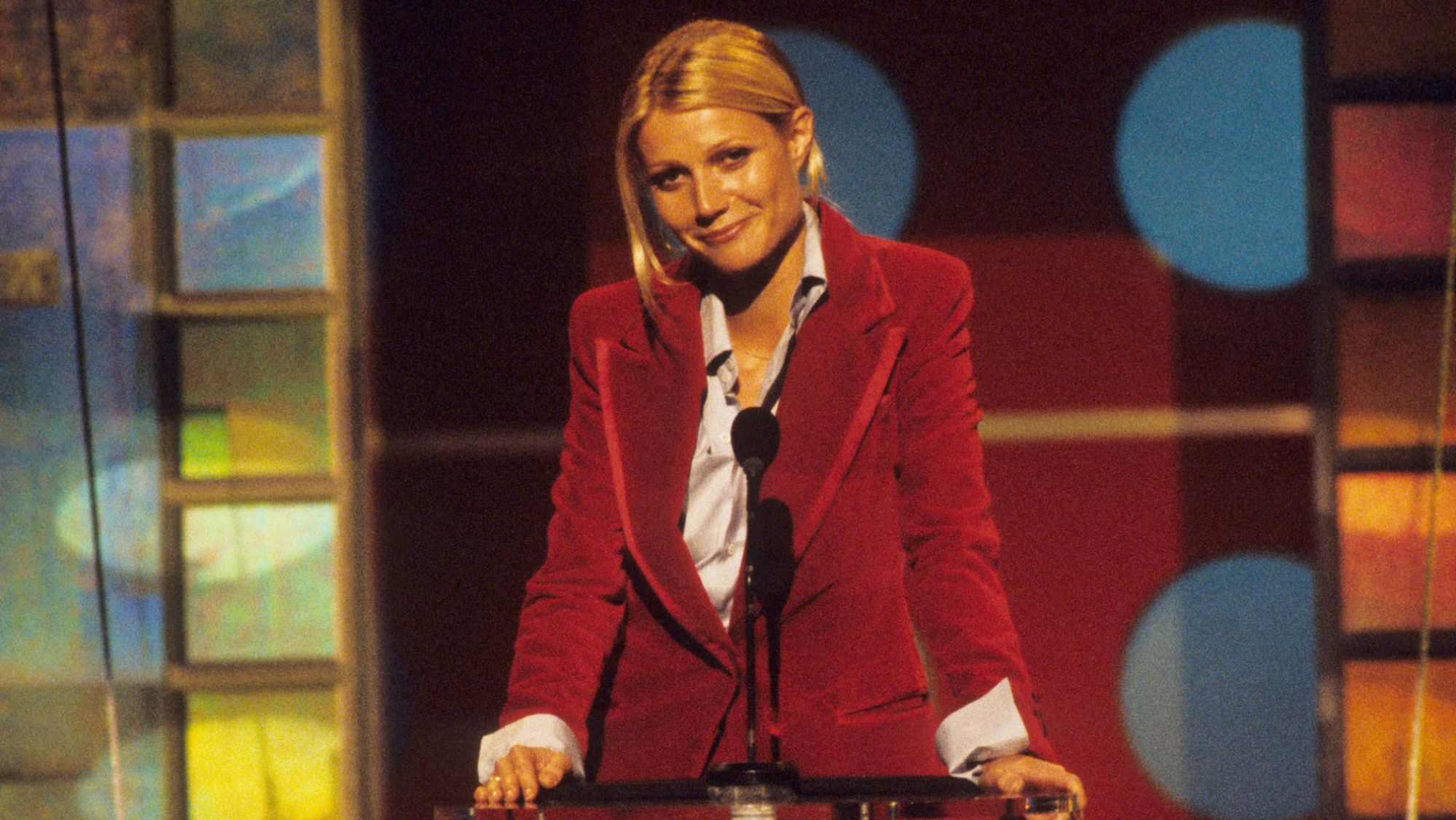Editor’s Note: Delving into the archives of pop culture history, “Remember When?” is a CNN Style series offering a nostalgic look at the celebrity outfits that defined their eras.
Remember when Gwyneth Paltrow turned up at the MTV Video Music Awards wearing a luxurious red velvet suit over an unbuttoned blue shirt, her blonde hair tucked behind her ears?
It was 1996 and Paltrow’s star was firmly on the rise. That same year, the then-23-year-old had appeared in “Emma,” playing Jane Austen’s meddlesome protagonist with vim (the New York Times described her as “resplendent… gliding through the film with an elegance and patrician wit that bring the young Katharine Hepburn to mind”). Over the next few years, she would go on to star in major box office hits, including “The Talented Mr. Ripley” and “Shakespeare in Love,” the latter winning her a slew of awards, including the 1999 Academy Award for Best Actress.
In the two decades since, the baby-pink Ralph Lauren gown she wore to accept her Oscar has attracted plenty of column inches. But it’s only recently that her red velvet suit has been treated to the same attention.

A return to hedonism
This suit – sensual, tactile, ruby red – was from Gucci’s Autumn-Winter 1996 show. Designed by Tom Ford, who joined the Italian brand in 1990, it was first worn with a velvet scarf by Floridian model Trish Goff.
Like many family businesses that became luxury behemoths, Gucci started life in the 1920s as a leather goods company. It initially sold saddles and equestrian accessories before turning its focus to luggage and, eventually, handbags. By the time Ford came on board, however, it was on the brink of financial ruin.
Former Bergdorf Goodman president Dawn Mello had been tasked with turning the brand’s fortunes around. But it was her Texas-born recruit who would go on to spearhead the label’s renaissance.
Initially asked to look after women’s ready-to-wear, Ford was made creative director in 1994 following Mello’s departure. With full control of the brand, he ushered in a new look for the heritage label: one that was slinky, sultry and unabashedly provocative.

Ford, who had trained as an architect and later cut his teeth at Perry Ellis, would hold the top job at Gucci until 2004. He took much of his hedonistic inspiration from the Halston-era world of Studio 54, putting his models in jeweled silk blouses and velvet flares. He laid clear the erotic potential of clothing – something he continued pushing through a series of infamous Gucci campaigns (including a 2003 ad featuring a model with the brand’s “G” logo shaved into her pubic hair).
To the fashion world, his tenure was a breath of fresh air.
“More than any other designer, Tom Ford will go down in history as the man responsible for dressing the final years of the 20th century,” British critic Susannah Frankel observed in the Independent newspaper in 1999. “The knowingly super-slick, super-sexy, hard-edged glamour the Gucci label has come to signify is perfect end-of-millennium fodder.”
Revisiting the suit
With the era’s fashion in the midst of a revival, social media is now revisiting the looks of some of its most glamorous standard-bearers – from a resplendently maned Julia Roberts to Liz Hurley in that Versace dress.
It’s a moment in which Instagram accounts like @tomfordforgucci have thrived. Delving into the visual history of Ford’s tenures at Gucci and Yves Saint Laurent, which he helmed from 1999 to 2004, the throwback account has introduced his fashion editorials and catwalk looks to a new audience hungry for bold sensuality.
Paltrow is one of a range of starlets whose fresh-faced party snaps and ’90s red carpet appearances now flood social media. And as a result, her VMAs red suit is now an increasingly covetable item, with one recently selling on luxury resale site 1stDibs for more than $8,000.
To celebrate Gucci’s 100th anniversary in April, the label’s current creative director, Alessandro Michele, even sent a near-perfect replica of the suit down the runway, though he replaced the original velvet scarf with a leather-and-silver body chain.

It is tempting to try and diagnose the reasons behind revived interest in the era’s fashion – and the women who wore it. Perhaps it embodies what we now see as a time of innocence – a pre-9/11, largely pre-internet decade that seems distant from our own, but just close enough for it not to have slipped entirely into the realms of history.
Or maybe we are possessed by a nagging sense that design was more exciting or daring in the past, especially in the wake of a pandemic that has interfered with our understanding of both time and style. (Sharp tailoring and Ford’s “hard-edged glamour” are all the more appealing after a year wearing sweatpants.)
But regardless of the reasons, Paltrow’s suit demonstrates that anything in fashion can be revived and returned to the spotlight. After all, it was Ford who had plundered the ’70s to create something fresh for the ‘90s in the first place.



